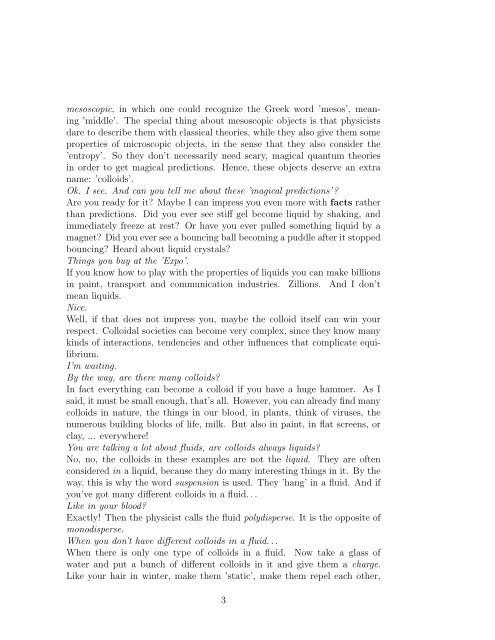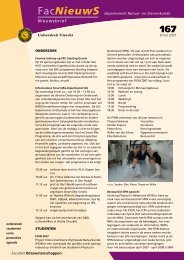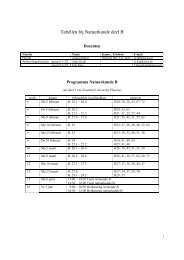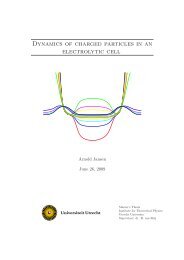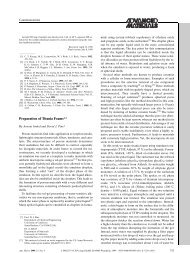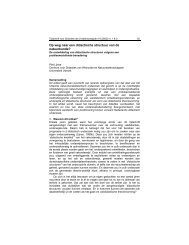Sedimentation Equilibrium of Mixtures of Charged Colloids
Sedimentation Equilibrium of Mixtures of Charged Colloids
Sedimentation Equilibrium of Mixtures of Charged Colloids
You also want an ePaper? Increase the reach of your titles
YUMPU automatically turns print PDFs into web optimized ePapers that Google loves.
mesoscopic, in which one could recognize the Greek word ’mesos’, meaning’middle’. The special thing about mesoscopic objects is that physicistsdare to describe them with classical theories, while they also give them someproperties <strong>of</strong> microscopic objects, in the sense that they also consider the’entropy’. So they don’t necessarily need scary, magical quantum theoriesin order to get magical predictions. Hence, these objects deserve an extraname: ’colloids’.Ok. I see. And can you tell me about these ’magical predictions’?Are you ready for it? Maybe I can impress you even more with facts ratherthan predictions. Did you ever see stiff gel become liquid by shaking, andimmediately freeze at rest? Or have you ever pulled something liquid by amagnet? Did you ever see a bouncing ball becoming a puddle after it stoppedbouncing? Heard about liquid crystals?Things you buy at the ’Expo’.If you know how to play with the properties <strong>of</strong> liquids you can make billionsin paint, transport and communication industries. Zillions. And I don’tmean liquids.Nice.Well, if that does not impress you, maybe the colloid itself can win yourrespect. Colloidal societies can become very complex, since they know manykinds <strong>of</strong> interactions, tendencies and other influences that complicate equilibrium.I’m waiting.By the way, are there many colloids?In fact everything can become a colloid if you have a huge hammer. As Isaid, it must be small enough, that’s all. However, you can already find manycolloids in nature, the things in our blood, in plants, think <strong>of</strong> viruses, thenumerous building blocks <strong>of</strong> life, milk. But also in paint, in flat screens, orclay, ... everywhere!You are talking a lot about fluids, are colloids always liquids?No, no, the colloids in these examples are not the liquid. They are <strong>of</strong>tenconsidered in a liquid, because they do many interesting things in it. By theway, this is why the word suspension is used. They ’hang’ in a fluid. And ifyou’ve got many different colloids in a fluid. . .Like in your blood?Exactly! Then the physicist calls the fluid polydisperse. It is the opposite <strong>of</strong>monodisperse.When you don’t have different colloids in a fluid. . .When there is only one type <strong>of</strong> colloids in a fluid. Now take a glass <strong>of</strong>water and put a bunch <strong>of</strong> different colloids in it and give them a charge.Like your hair in winter, make them ’static’, make them repel each other,3


